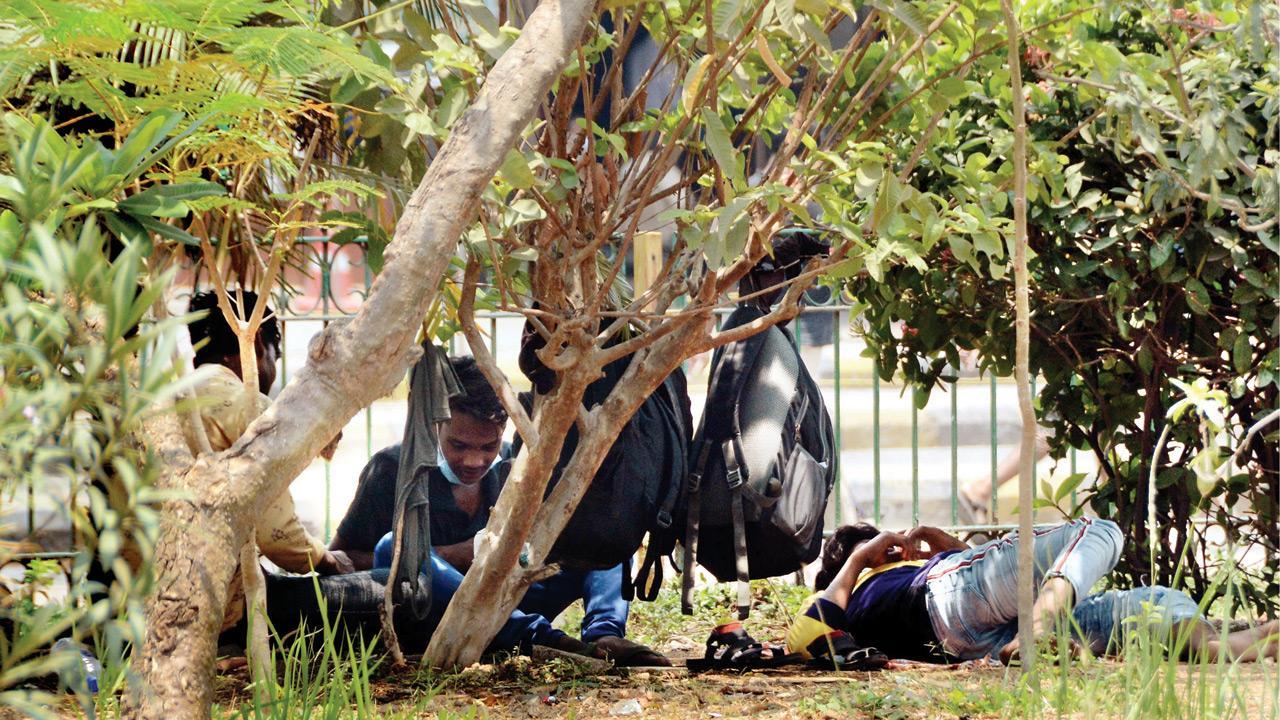Even as the Shiv Sena amends laws to give trees a heritage tag, in Mumbai, activists ask where is the digitised census that was completed way back in 2017

People rest under the shade of a tree in Tilak Nagar in May. File pic
Even as the Shiv Sena shows its affection for trees by introducing the preservation of heritage trees, the Sena-ruled BMC is yet to publish a tree census it completed in 2017. The study started in 2014 and the corporation spent R2.5 crore on the GPS-based project, which was never revealed to the public.
An amendment to the Maharashtra (Urban Areas) Protection and Preservation of Trees Act, 1975, to bring in the concept of heritage trees was approved in a meeting of the Maharashtra Cabinet last week.
The government claimed that this will help preserve existing trees having cultural importance. But the tree census, mandated by the same act, doesn’t seem to be getting the BMC’s attention.
What was the census
The Act mandates a census of trees in the civic body’s jurisdiction every five years. The last study — which used the traditional method of counting trees was published in 2008. The next census was expected to be ready in 2013, but it only began on February 10, 2014, and was supposed to be complete in a year. The BMC claimed that the study was GPS (Global Positioning System)-based and took three years to complete. The work was given to SAAR IT Resources, a Nagpur-based firm. The census was supposed to help people trace trees and get information like location, species, height, girth, age and condition on the civic body’s website.
But the claim and the census seem to have disappeared, even as there was an uproar against tree cutting, especially due to the Metro car shed at Aarey. Tree lovers and activists continue to wait for the census and the only mark of the study is the BMC’s Environmental Status Report where the ward-wise number of trees has been mentioned but there are no further details.
“In 2016, the Bombay High Court had asked the BMC to reveal the census data but they have kept it well hidden. The BMC was supposed to give unique identification numbers. In their absence, it is not known how many trees have been cut illegally. The BMC spends crores on this census and if you compare ward-wise data of two censuses, you will find an identical number of trees in some wards over five years. Like most things in BMC, the tree census is just a scam,” said activist Zoru Bhathena.
“The GPS-based study would tell the total number of trees or identify the species in a particular area. This would have helped preserve the city’s tree cover. The corporation is not interested in preserving but cutting of trees,” said another activist.
Meanwhile, the BMC allows the uprooting of an estimated average of 5,000-7,000 trees for various infrastructure works every year. This number has been derived from the data of the monthly Tree Authority meetings. In 2019 alone, the BMC published notices for the cutting of more than 20,000 trees for infra works, including the ones in Aarey.
“The initiative for heritage trees will surely create awareness and help preserve trees. But at the same time, the corporations forgot to implement the original Tree Act. This is not just in Mumbai, in Thane too, a digitised tree census is unpublished since 2011,” said tree activist Rohit Joshi.
He added, “It is an open secret that developers mention less number of trees that would be affected by their projects than the actual number. No one knows the future of transplanted trees. The GPS-based data would not have allowed such illegal tricks. This is why it is not seeing the light of day.”
Jitendra Pardeshi, superintendent of BMC’s Garden department remained unavailable for comment despite several calls and messages.
7k
Avg no. of trees BMC okays for uprooting annually
 Subscribe today by clicking the link and stay updated with the latest news!" Click here!
Subscribe today by clicking the link and stay updated with the latest news!" Click here!









